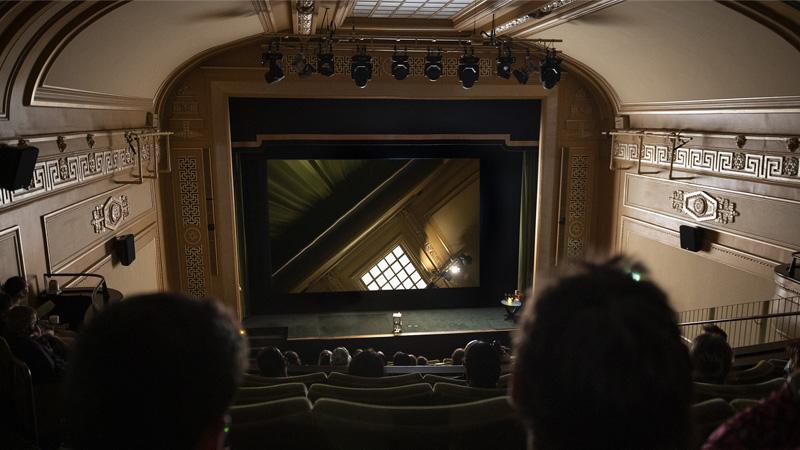On Sunday 26 September, students from the University of Westminster took part in an event to mark the end of the two-year Lumiere 125 project, which celebrates 309 Regent Street and its place at the heart of history of photography, film, theatre and illusions.

The Lumiere 125 project is funded by Quintin Hogg Trust, and has been designed to offer all Westminster students additional opportunities for enhanced learning. It commemorates the 125th anniversary of the birth of British cinema, where for the very first time in 1896, the Lumiere Brothers showed the moving film of a train to a paying audience in Britain at the University’s Regent Street Cinema that is still being used today. Not only did the event celebrate the birth of British cinema, it also marked its rebirth after the lifting of lockdown restrictions.
To honour the 180th anniversary of Europe’s first commercial portrait photography studio, students engaged in unusual projects including making Victorian steam punk cameras from pringles tubes and shoe boxes, and processing their own homemade portraits using instant coffee as a film developer. The work is being exhibited in the foyer of Regent Street Campus from 26 September – 3 October.
Students had also created sequels to the original Lumiere Brothers’ films, which were screened at Regent Street Cinema on the same day. The winning students were presented with a crystal ‘LUMIE’ award which depicts the iconic Lumiere train entering ushering in the age of motion pictures. The awards were presented by Children’s author and poet Michael Rosen, who joined the event as a special guest and unveiled a commemorate plaque to mark the 125th anniversary.
In the cinema, Illustration and Visual Communication BA Honours students prepared magic lantern slides, which were used to outline the remarkable history of 309 Regent Street, while other students took portraits of guests using shoebox cameras and were processed using coffee and washing soda for collection after the awards ceremony.
Other events during the day included Donald Mackenzie performing a recital of movie inspired themes using the cinema’s organ, and Stephen Ryley recreating some of the Professor Peppers illusions, which were demonstrated in the cinema in the 1860s. Julie Marsh also gave a demonstration of her installation art piece, where a laser was guided around the interior of the cinema, simultaneously accompanied by a point-of-view video screened by projection equipment.
Talking about the celebration event, Michael Rosen said: “The event at the University of Westminster was uplifting, inspiring, hugely informative and great fun too! It was fascinating to hear how we were commemorating a key moment in the history of cinema…I hope that I will be able to keep up some kind of connection with the film, animation and photography department in the future.”
Kristina Hristova, a Journalism BA Honours student that took part in the project, said: “'Participating in the Pioneers of Portrait Photography competition challenged me both on a personal and professional level. Before making my shoebox camera, I never thought about how hard it is to seize the moment…I would like to thank Stephen Ryley. If it were not for his support and DIY book, I would be lost.”
Stephen Ryley, Principal Lecturer and lead tutor for the Lumiere 125 project, added: “The entire Lumiere project was quite a tricky venture as we were asking our students to complete a variety of seemingly impossible tasks, through a time of unparalleled challenge, but I have been extremely moved by the resilience, humour and ingenuity displayed by our student cohort. We were celebrating our past yesterday, but the future is clearly in safe hands. We are extremely grateful to the Quintin Hogg Trust whose generosity made this possible.”
Find out more about the project on the Lumiere 125 website.





